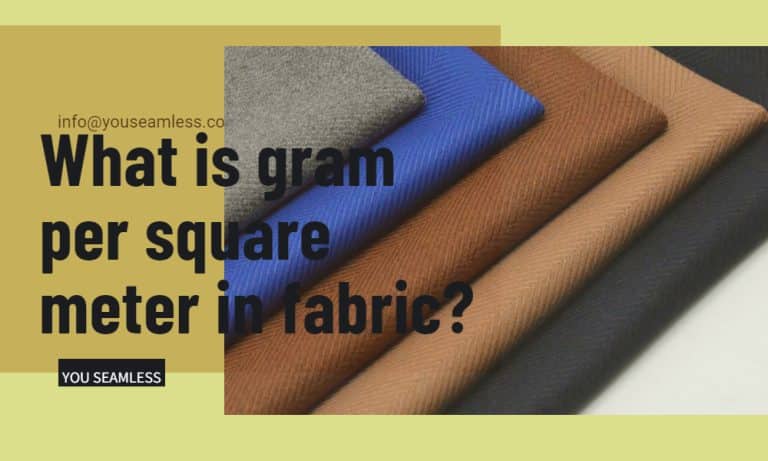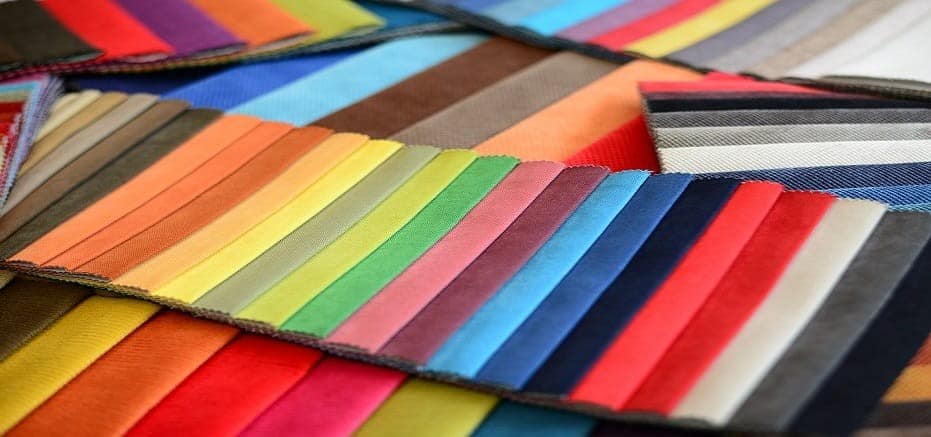Fabric is one of the common things in our daily life, they are used to make various clothing and other textiles. When we buy clothes, we often see an important index——the gram per square meter of the fabric. So what is gram per square meter?In this article, I will introduce the square gram weight of the fabric and their importance in textile industry.
What is gram per square meter (GSM)?
First, let’s explain what is gram per square meter. Simply speaking, GSM refers to the weight of the fabric in per unit area and it usually expressed in g/m ² or oz/yd2 ² in units. The GSM can directly affect fabric’s hand feel, breathability, elasticity, and other characteristics. It is an important parameter for the textile industry.
The square gram weight of fabrics holds importance within the textile industry
1.The square gram weight of the fabric can directly affect the hand feeling of the fabric. Generally speaking, the lighter fabric has more soft feeling and it suit for making summer clothing and muslin curtain. On the other hand, heavier fabric has more thick feeling and it suit for making winter coats or thick home textile products. We can choose fabrics of different seasons and purposes better through understanding the GSM.
2. The square gram weight of the fabric has a close relationship with usage performance of the fabric. The square gram weight of the fabric determines its strength and persistence. The heavier fabrics are not easily deformed, so they are suit for making high quality clothing and durable home goods. However, the lighter fabrics are soft and breathable, which suit for making underwear. We can choose the right fabric according to the usage requirements of different fabrics by understanding the GSM.
3. The square gram weight of the fabric also has a close relationship with the cost and price. High weight fabrics need more raw materials and the making processes are more complex, so the costs will be higher. On the other hand, the lighter weight fabrics have lower costs. Thus, understanding the grams per square meter of the fabric can help you evaluate the cost performance of fabrics and choose fabrics that are suitable for your needs and budget.
In addition to hand feel, texture, performance, price, and cost, the square gram weight of the fabric is also closely related to some other factors.
- Breathability and moisture absorption. Lighter weight fabrics have better breathability and moisture absorption and they can keep skin dry and comfortable. In contrast, heavier weight fabrics can lead to the accumulation of heat and moisture, making you feel uncomfortable. So, when you buy summer sportswear you can choose light weight fabrics.
- The protective performance. Some special industries require protective clothing. In this case, fabrics with heavier weight are often more favored because they can provide better protective effects. For example, fire-resistant clothing, chemical-resistant clothing, and bulletproof vests often use heavier fabrics to ensure the safety of users.
- The dyeing and printing effects. Lighter weight fabrics are more likely to achieve bright and vibrant color effects, as they have better ability to absorb dyes. Heigh weight fabrics are more suitable for printing because they can better support and display printed patterns.
- The environmental awareness. With the increasing awareness of environmental protection among people, more and more textile manufacturers are paying attention to reducing resource consumption and environmental impact. Lighter fabrics need less raw materials, which can reduce the use of energy and water resources and be more environmentally friendly. Therefore, the square gram weight of the fabric has also become an indicator of the environmental friendliness of textiles.
So, how do you determine the square gram weight of the fabric?
The square gram weight of the fabric is achieved by weighing one square meter of fabric. Here is a common method:
- Prepare a sufficiently large fabric sample and ensure that it is complete.
- Use an accurate balance to weigh this fabric sample. Ensure that the balance is calibrated and zero it before weighing.
- Place the fabric sample flat in a dry, windless area to avoid any external interference.
- Place the balance on the fabric sample to ensure it fits perfectly and read the weighing result.
- Record the weight of the fabric sample and ensure that the recorded unit is grams (g).
- Use measuring instruments such as sewing rulers to measure the length and width of the sample, ensuring accurate measurement results.
- Calculate the square gram weight: Divide the weight of the fabric sample by its area (length multiplied by width). For example, if the fabric sample weighs 100 grams and has an area of 1 square meter (i.e. 10000 square centimeters), then the square gram weight is 100 grams/1 square meter=100 grams/square meter.
Square gram weight of common clothing fabrics
The following are the square gram weight ranges for some common clothing fabrics, which are only general reference values. The actual square gram weight may vary depending on different brands, styles, and fabric characteristics:
- Silk: 8g/㎡ -50g/㎡
- Cotton: 100g/㎡ -300g/㎡
- Linen: 100g/㎡ -500g/㎡
- Wool: 100g/㎡ -600g/㎡
- Polyester: 40g/㎡-300g/㎡
- Nylon: 40g/㎡-200g/㎡
- Velvet: 200g/㎡-500g/㎡
- Satin: 50g/㎡-200g/㎡
- Lace: 10g/㎡ -100g/㎡
These data are for reference only, and the actual square weight of the fabric may vary between the above ranges. When purchasing clothing fabrics, you can refer to these data to understand the texture and thickness of the fabric.
Conclusion
What is gram per square meter or GSM? In summary, the square gram weight of a fabric refers to the weight of the fabric per unit area, which has a significant impact on the feel, texture, performance, price, and cost of the fabric. By understanding the square gram weight of fabrics, we can better choose suitable fabrics to meet the needs of different products








